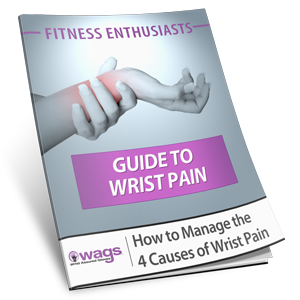
We’re winding down on the month celebrating the occupation and the spirit behind Wrist Assured Gloves – National Occupational Therapy month. WAGs creator and CEO, Paula, would love to answer your questions about occupational therapy, what to do with a great idea, questions about WAGs and more via Facebook and Twitter (hashtag #WAGsChat). The health question and answers event is our first and we’d like to continue once a month!
Paula’s experiences as an OT and an entrepreneur are diverse, to say the least. She’s used her knowledge and background to solve problems she encountered professionally and personally, building a successful business along the way. Her areas of expertise as an OT include the following:
- Child Development
- Sensory Integration
- Learning Styles / Learning Disabilities
- Traumatic Brain Injury
- Low Vision & Visual Disorders
- Ergonomics / Work Station
- Adapting Environments
As a business woman in the yoga and Pilates accessory market, Paula is also be happy to answer questions about moving an idea from the starting stages to the market. Of course questions on WAGs are always welcomed! And if you’re still wondering “what the heck is an occupational therapist?”, read on from Flexible Fitness:
Occupational therapists work with people of all ages and in almost any environment you can think of including hospitals, homes, schools, outpatient centers, prisons, community centers and homeless shelters. They customize their treatments to fit the unique needs of each individual. They do this by looking at the person needing the treatment, their environment and the activities that the person needs to accomplish. Some examples of occupational therapy practices include providing adaptive equipment recommendations and a home exercise program for a person with arthritis who wants to continue gardening and cooking; providing strategies to a person with schizophrenia for managing their symptoms and an apartment; helping a student with attention deficit disorder find ways to tolerate sitting in a busy class room and concentrate during a test; and teaching the family of a person with a stroke how to help with self care and arm exercises.
Occupational therapy is used to help people of all ages live life to its fullest by helping them promote health, prevent — or live better with — injury, illness or disability.
If you or someone you know might benefit from Occupational Therapy services, consult with your doctor. For more information on Occupational Therapy, visit the American Occupational Therapy Association website at www.aota.org.





When I worked at a Hospital we used to celebrate OT week. Do these still exist?
Various mousepads, typing pads, split keyboards, and wrist splints (braces) are designed to relieve wrist pain. Some people find these devices help their symptoms. You may wish to try a few different kinds to see if any help.,`:..
Newest article produced by our personal web blog
http://www.healthmedicinedigest.co/